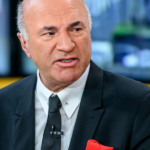US consumers probably experienced a slight pickup in underlying inflation in July as retailers gradually raised prices on a variety of items subject to higher import duties.
The core consumer price index, regarded as a measure of underlying inflation because it strips out volatile food and energy costs, rose 0.3% in July, according to the median projection in a Bloomberg survey of economists. In June, core CPI edged up 0.2% from the prior month.
While that would be the biggest gain since the start of the year, Americans — at least those who drive — are finding some offset at the gas pump. Cheaper gasoline probably helped limit the overall CPI to a 0.2% gain, the government’s report on Tuesday is expected to show.
Among other economic data in the coming week, a Fed report is likely to show stagnant factory output as manufacturers contend with evolving tariffs policy.
Elsewhere, several Chinese data releases, gross domestic product readings for the UK and Switzerland, and a possible rate cut in Australia are among the highlights.
Asia has a hectic data calendar, led by a wave of Chinese indicators, GDP reports from several economies, and a closely-watched rate decision in Australia. The week will see credit numbers from China, which will be assessed for signs that policymakers’ efforts to revive economic growth are beginning to bear fruit. Money supply data will offer a complementary signal on underlying liquidity conditions.
On Tuesday, the Reserve Bank of Australia is poised to lower policy rates for a third time this year after second-quarter inflation cooled further. A gauge of Australian business confidence due the same day will offer a timely read on sentiment heading into the second half. Wednesday brings Australia’s wages data, followed by the employment report on Thursday.
India reports CPI data on Tuesday, which will likely show prices cooled further in July from a year ago. Wholesale prices follow on Thursday, and will indicate whether cost pass-through remains muted.
On Wednesday, Thailand’s central bank is expected to cut rates amid subdued price pressures and weak economic growth.
Also on Wednesday, New Zealand releases retail card spending data, South Korea publishes its unemployment rate for July, and Japan releases its producer price index — a gauge of wholesale inflation.
China’s big reveal comes on Friday, with a suite of July activity data including industrial production, retail sales, fixed asset investment, and jobless figures.
Also on Friday, Japan publishes preliminary estimates of second-quarter GDP, with forecasts suggesting the country likely avoided a recession.
Singapore, Malaysia, Taiwan and Hong Kong are among the other economies reporting GDP, providing a broader look at growth momentum and external balances across the region.
Meanwhile, second-quarter GDP is expected to show economic momentum slowing sharply after a growth spurt at the start of the year, meshing with the BOE’s view that the economy has started to show more slack.
Much of continental Europe will be on holiday on Friday, and data may be sparse too. Germany’s ZEW index of investor sentiment comes on Tuesday. In the wider euro region, a second take of GDP, along with June industrial production, will be published on Thursday.
Recent data included weaker retail sales, rising unemployment and gloomier industrial sentiment, though price pressures have also appeared to be stickier. Most economists expect two more quarter-point cuts in Norway this year, in September and December.
Some monetary decisions are also due in Africa:
In Russia on Wednesday, analysts expect inflation to have fallen below 9% in July from 9.4% a month earlier.
Turkish central bank Governor Fatih Karahan will present the latest 2025 inflation outlook at a quarterly meeting on Thursday.
And finally, on Friday in Israel, inflation is expected to have eased to 3.1% in July from 3.3% a month earlier.
Brazil’s central bank gets the week rolling with its Focus survey of market expectations. Analysts have been slowly trimming their consumer price forecasts, but all estimates remain well above the 3% target through the forecast horizon.
Data on Tuesday should show that Brazilian consumer prices for July ticked down ever so slightly from June’s 5.35% print, substantiating the central bank’s hawkish rate hold at 15% on July 30.
Also due on Wednesday is Argentina’s July consumer prices report. Analysts surveyed by the central bank expect a slight uptick in the monthly reading from June’s 1.6%, with the year-on-year figure drifting lower from 39.4%.
Inflation in Peru’s megacity capital of Lima has been below the 2% midpoint of the central bank’s target range all year, but the early consensus expects the central bank to keep its key rate unchanged at 4.5% for a third straight meeting.
Colombia is all but certain to have posted an eighth straight quarter of growth in the three months through June.
The nation’s central bank, which in June highlighted that the economy had gained momentum, is forecasting a 2.7% rise in GDP this year and 2.9% in 2026, up from 1.7% in 2024.









